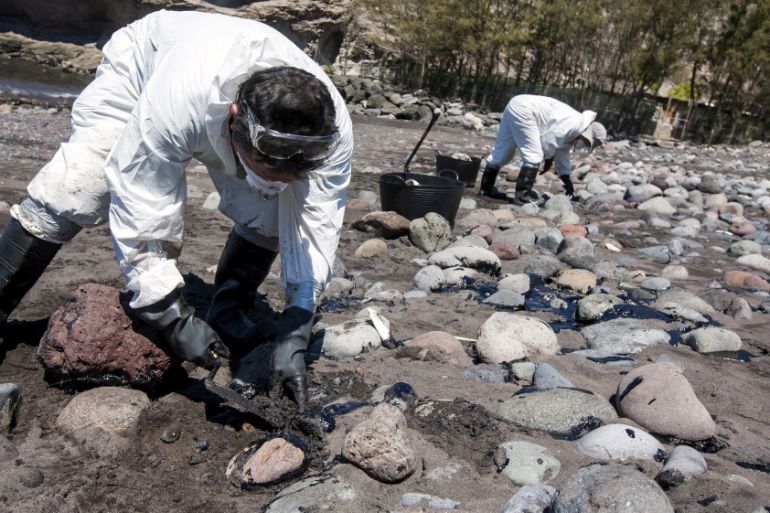Spain issues alert over oil slick threatening islands
Second highest alert level activated as slick that reached coastlines of Canary Islands could affect vulnerable land.

Spain’s government has activated an environmental emergency alert over an oil spill that threatens pristine beaches on the southwestern Canary Islands.
The government issued the second highest alert level after analysing ocean current data from Spain’s Oceanographic Institute, saying the slick that reached coastlines earlier in the week could affect vulnerable land.
Keep reading
list of 4 itemsCould shipping containers be the answer to Ghana’s housing crisis?
Thousands protest against over-tourism in Spain’s Canary Islands
Holding Up the Sky: Saving the Indigenous Yanomami tribe in Brazil’s Amazon
The government said on Saturday that one beach had been cleared of oil and clean-up operations were ongoing on three other beaches near the tourist hot-spot of Maspalomas on Gran Canaria.
Regional authorities were criticised by environmental groups like Greenpeace after the Russian trawler Oleg Naydenov, which caught fire in a local port on April 11, was towed out to sea as a precaution.
The boat, which carried 1,400 metric tonnes of a viscous type of fuel oil, sank on April 14, some 24 kilometres south of the island.
‘Dolphin partially coated in oil’
Now, currents could carry slicks – believed to have come from the Oleg Naydenov – to other nearby islands, the government said.
“The emergency level 2 is activated for all the Canary Islands and proactively planned surveillance flights are now surveying the south of Tenerife and La Gomera islands,” Saturday’s statement said.
Greenpeace posted photographs of a dolphin partially coated in oil, while Spanish state television TVE broadcast images of workers cleaning a rocky beach that was stained black with oil.
Red Cross spokesman Jose Antonio Rodriguez told The Associated Press news agency that Veneguera beach on Gran Canaria island, a top European vacation spot, had been cleaned.
An unmanned remote-controlled submarine sent down 2,400 metres to survey the wreck of the Russian trawler was inspecting to see if three holes in its hull could be blocked.